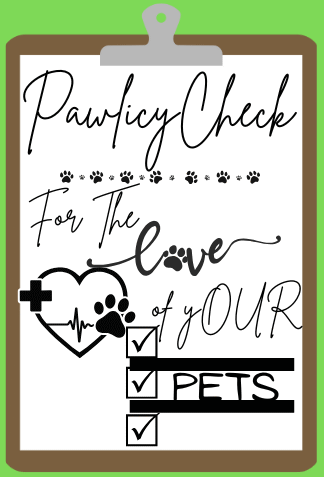Understanding Pet Insurance and Coverage Options
Pet insurance serves as a financial safety net for pet owners, ensuring that they can provide necessary medical care for their beloved companions without incurring excessive costs. The fundamental aspects of pet insurance include coverage options that cater to various health needs and circumstances. In general, pet insurance health plans can be classified into three main types: accident-only plans, time-limited plans, and comprehensive plans. Accident-only plans cover injuries resulting from accidents, while time-limited plans provide coverage for a specific duration for certain conditions. Comprehensive plans offer broader protection, including coverage for illnesses, injuries, and wellness care, allowing pet owners to have peace of mind regarding their pet’s health.
When evaluating pet insurance, it is crucial to consider policy features such as deductibles, co-pays, and reimbursement levels. The deductible is the amount a pet owner must pay out-of-pocket before insurance coverage kicks in, while co-pays refer to the percentage of costs that the owner is responsible for after the deductible is met. Reimbursement levels, expressed as a percentage of the total bill, indicate how much the insurance will cover after the owner pays the deductible and co-pay. Understanding these elements can help pet owners anticipate their financial responsibilities and choose a plan that aligns with their budget and pet’s needs.
In addition, customizing a policy allows pet owners to adapt coverage to their pets’ specific health requirements. Factors such as age, breed, and pre-existing conditions can significantly influence a pet’s health risks. Therefore, pet owners are encouraged to assess various plans and choose appropriate coverage options that not only provide essential medical care but also include additional services such as routine check-ups, vaccinations, and dental care.
By gaining insight into the nature of pet insurance and its available coverage options, pet owners can make informed decisions when selecting the right plan for their furry friends.
Expert Tips and Resources for Pet Parents
Navigating the pet insurance landscape can be daunting for pet parents, but with the right resources and expert guidance, you can make informed choices regarding your furry family members’ healthcare. One of the first steps is to thoroughly understand policy details. When examining a pet insurance policy, it’s crucial to look beyond the price and assess the coverage provided. Pay close attention to what is included and excluded, as well as any waiting periods, annual limits, and deductibles that may apply. Familiarize yourself with terms like ‘pre-existing conditions,’ which can significantly affect coverage.
Maximizing your pet insurance benefits is another key factor. Be proactive in keeping records of your pet’s medical history, vaccinations, and treatments, which can help facilitate claims processing. Regular check-ups may also contribute to a more comprehensive insurance profile, ensuring that all aspects of your pet’s health are considered. Additionally, ask your veterinarian for guidance on common conditions and preventive measures that may lower long-term healthcare costs.
Beyond understanding insurance, pet parents should engage with available resources that can bolster their knowledge of pet care and wellness. Online platforms such as forums and websites dedicated to pet health can provide valuable insights and advice. Local pet care workshops and seminars often offer opportunities for learning about nutrition, training, and preventive medicine. Furthermore, consider joining pet owner communities where you can share experiences and gain support in managing your pet’s health decisions.
Finally, prioritizing ongoing financial planning for your pet’s health is essential. Setting aside a dedicated budget for healthcare can alleviate stress associated with unexpected costs. Proper planning, along with a solid insurance policy, can significantly reduce future worries and help ensure that your pet receives the highest quality of care at any stage of their life.
